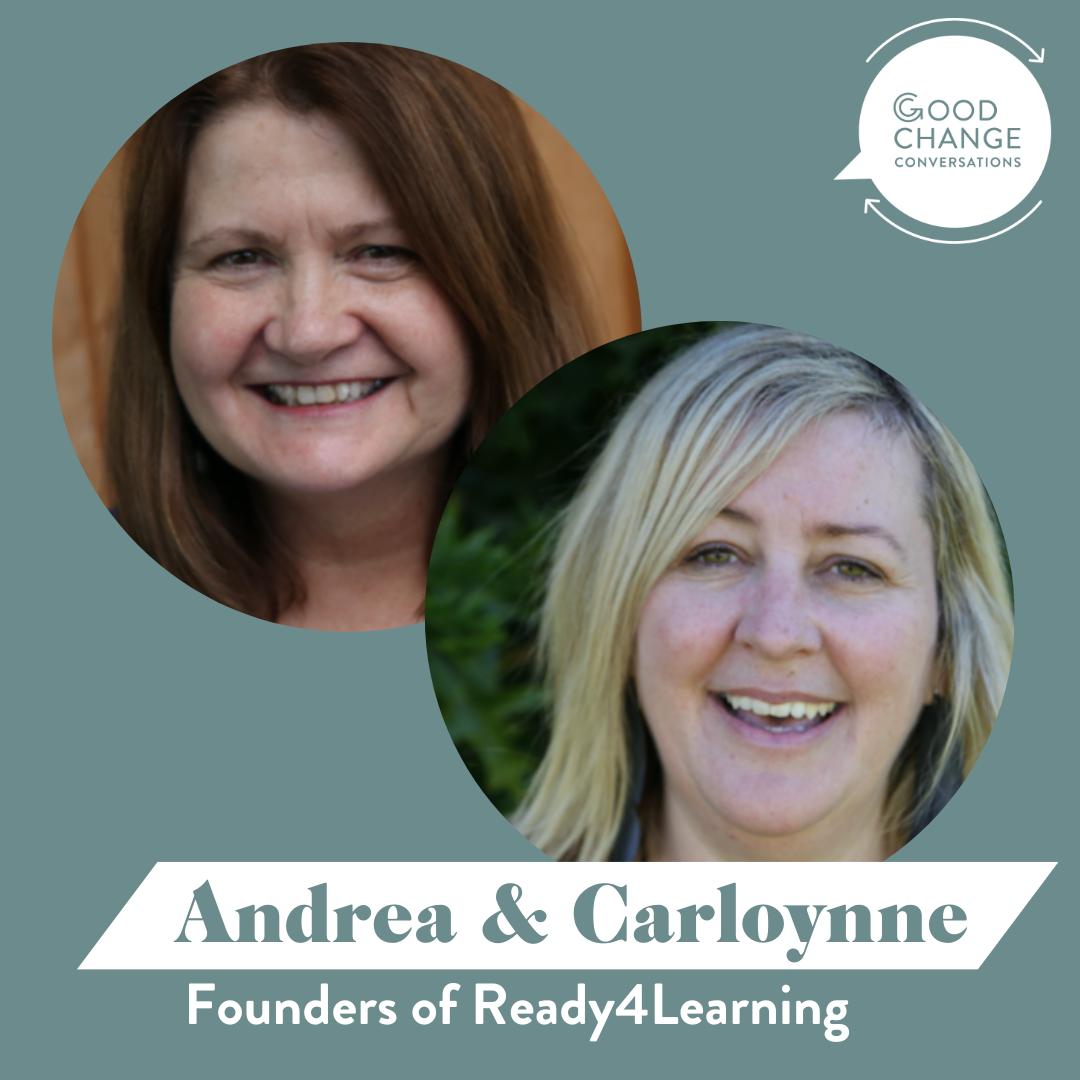
Positive Change for Future Generations with Ready4Learning
Share

Good Change:
Andrea Ford and Carolynne Masson are the founders of Ready4Learning, an organization that supports early learning centers, schools, and Whanau. Ready4Learning is nationally and internationally recognized for its framework, which helps young tamariki develop their foundation skills and prepare them for the structured school curriculum. Andrea and Carolyn are passionate educators, facilitators, and coaches with strengths in leadership development, collaborative inquiries, readiness for learning, and clarity of teaching and learning. As a parent, I wish I had known more about their wealth of knowledge when my kids were transitioning from kindergarten to the schooling system. Can you tell us more about what Ready4Learning actually is?
Andrea and Carolynne:
We believe that there's a common misconception that children aged five are ready for school and ready for learning. However, there are many skills and dispositions that children need to access before they can thrive in a structured learning environment. Ready4Learning was born out of our passion for educating teachers and whanau about these essential skills and dispositions.
Good Change:
Did you notice a real need for this type of education?
Andrea and Carolynne:
Absolutely. While working for the University of Waikato, I was collaborating with schools around the North Island on why they were implementing a learning through play approach. They consistently mentioned that tamariki were coming in with different skills, despite being more technologically savvy. This inspired us to research what skills and dispositions were necessary for tamariki to successfully access higher learning.
Good Change:
You mentioned a significant shift in tamariki's behavior from the 1980s to now. Why do you think this has happened?
Andrea and Carolynne:
In the 1980s, there was a longitudinal study in the US involving thousands of children that tested fine and gross motor skills, such as jumping, crawling, and skipping. Recently, researchers revisited the data and found that only one in 12 children today could complete these tasks. The big indicator for this change is technology and how it has influenced our interactions with it. In New Zealand, a recent study found that one in four children has developmental delays at the age of four, further evidence that technology plays a role.
As parents, we have become more risk-averse and have stopped encouraging our children to engage in physical activities like climbing trees. This has had a significant impact on their movement development. Additionally, we tend to do things for our children to make life easier, such as purchasing Velcro shoes instead of teaching them how to tie shoelaces. Everyday skills like tying shoelaces are essential for developing fine motor skills, crossing the midline, and more.
When we were parents back in the early nineties, we would take our children to the supermarket and ask them to fetch items like milk and butter, which helped develop their vocabulary and language skills. Nowadays, we see children sitting inside trolleys, often on their parent's phone, as we rush to get things done quickly. We miss out on all the opportunities to develop their language and vocabulary.
Good Change:
You mentioned on your website, "All students learn best when teachers adopt an integrated approach to reading". What do you mean by this?
Andrea and Carolynne:
When we talk about integration, we mean putting all the skills together. In school, we tend to teach writing, spelling, and math separately, but integrating these skills means understanding how they all relate to a specific subject. For example, children need to learn phonological awareness, which includes understanding rhyming and breaking words into syllables. These underpinning skills are essential for reading, writing, and spelling. Teaching literacy is complex because humans were designed to talk, not to read or write. We've worked hard in schools to educate teachers and focus on automaticity, which frees the brain for new learning.
Good Change:
I suppose it's not just about educating the teachers and the children, but also about educating the parents.
Andrea and Carolynne:
Absolutely, and also about memory. Memory is essential for reading and writing. There's visual memory, which involves remembering the order of things that you see, and auditory memory, which involves hearing something in a sequence and repeating it back. Both of these types of memory need to be integrated into literacy learning.
Good Change:
What are the foundation skills that children need to have in place?
Andrea and Carolynne:
The foundation skills include moving, hearing, listening, speaking, and seeing. The key competencies are managing self, dispositions, and print. Under each of these skills, there are smaller skills, such as movement. Movement is particularly important because the brain gives it priority. For example, if a child doesn't have core strength, they will struggle to sit up in a chair, which will take up brain capacity that should be used for learning. Similarly, if a child has poor fine motor skills, they will struggle to hold a pencil, which again, will take up brain capacity. Children at 4.9 years old should be able to follow three instructions, but if their brain has cognitive overload, it will be too difficult for them to learn. Cognitive overload is part of the cognitive load theory, and it can cause children to tire easily or become antsy. So, movement is probably the key foundation skill.
Good Change:
Is there a difference in the development of foundational skills between girls and boys?
Andrea and Carolynne:
Yes and no. As a new entrant teacher, I noticed that girls tend to have greater oral language and vocabulary, while boys tend to be more active and enjoy climbing trees. Developmentally, we know that boys' brains take a little longer to cross over for learning, which happens around age seven for more formal learning. Boys require more movement in their development, and girls tend to be more skilled with their oral language but may not take as many risks. It's not just a matter of giving a child a backpack and pen at age five and expecting them to learn their ABCs and 123s. It's much more complex than that.
Another critical foundational skill for reading and writing is hearing and listening. There's been a lot of discussion around new structured literacy in papers and magazines, but what's more important is starting with those foundational skills. Parents can read rhymes, jingles, and sing to their children, rather than just teaching them the alphabet. Research shows that reading to a child for 20 minutes a day can increase their vocabulary by millions of words. Even if children learn to read on their own, reading to them can gift them with more vocabulary. Reading them harder books that they can't read themselves helps develop their vocabulary and oral language, which is essential for comprehension.
Good Change:
In the New Zealand education system, what changes would you make? Do you feel like there's something different that could be done so we are not putting all subjects in a box?
Andrea and Carolynne:
It's not just the education system; society plays a significant role in the education of our children. Many schools are adopting a learning-through-play approach, which brings the early childhood curriculum into the classroom. They're focusing on structured literacy, which is the bigger picture. We need to start earlier and have a more seamless transition between the ages of three to seven in terms of what learning looks like. Schools should change their expectations when a child starts school and introduce more formal learning and testing from age seven onwards.
Good Change:
Does music play a role in early childhood development?
Andrea and Carolynne:
As researchers, we know that music lights up more areas of the brain than any other activity. We don't fully understand why our brains engage with music, but we do know that it has a beautiful effect on memory, listening, and shelter. Music also evokes memories and children love to engage with it. They enjoy moving, dancing, and listening, so it's wonderful for their brains and for learning.
Good Change:
What advice do you have for mothers of young children to help them develop their foundation skills?
Andrea and Carolynne:
There are a couple of things we recommend. First, if you are bottle-feeding instead of breastfeeding, make sure to rotate sides to promote balance and midline development. Secondly, talk to your baby and play music for them, even while pregnant. This helps develop their tummy and neck muscles and encourages them to look around. It's important to keep them on their tummies instead of in exersaucers so they can develop properly.
We also encourage parents to play with their children outside and get them off devices. Engage in activities like swinging, climbing, cooking, baking, and cleaning. View these activities as opportunities to gift your child with language and vocabulary that will aid in their developmental journey. I Spy books, puzzles, and other visual discrimination games are fantastic for helping children learn letters and the foundations of math. Puzzles also foster and develop fine motor skills and visual memory.
It's important to remember that puzzles and other activities can aid in pre-reading and pre-writing, and doing them together with your child is a great opportunity for bonding and conversation. For more information, visit our Ready4Learning program at www.ready4learning.co.nz.

